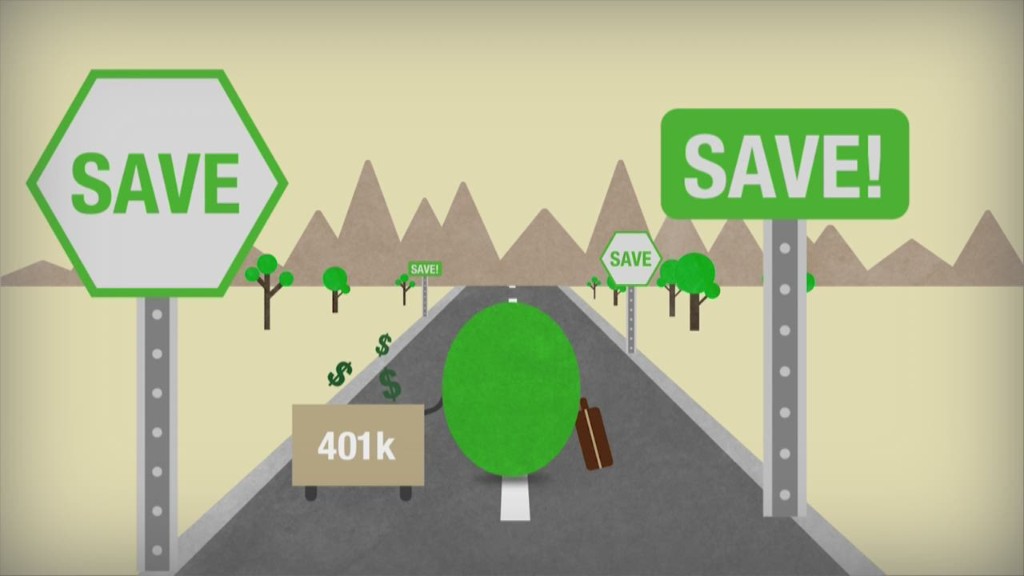
Afraid you might be behind on saving for retirement? There's one simple way to get ahead of pretty much everyone else.
About 80% of Americans surveyed by Voya Financial said they hadn't taken the time to review or revise their retirement plan within the past year.
So simply taking a look at how your 401(k) or IRA performed in 2016 will mean you're already doing more than most Americans.
"You want to look at it at least once a year, if not quarterly," said James Nichols, Senior Vice President at Voya.
Calculator: Are you behind on retirement saving?
But you don't necessarily need to make changes to your game plan. Here are four things to ask yourself to make sure you're on track in the new year.
1. How much did I spend last year?
It's hard to know how much money you'll need in retirement if you don't know how much you spend each year to support your lifestyle. Experts suggest looking at a few months from the past year.
"Most people are blown away by their spend number," said Tim McGrath, a CFP and founding partner at Riverpoint Wealth Management.
That's partly because they don't take into account the one-time purchases, like a new couch or furnace, that don't occur each month.
"There's always something that's not in the budget that throws everything for a loop," McGrath said.
2. Can I increase my future contributions?
Don't think of your savings as a leftover. Put it in your budget along with your expenses.
Many financial planners suggest saving 15% of your gross income.
"When you're saving for a longer-term financial goal like retirement, it's prudent to save at least 15% of your income," Nichols said.
Related: How much should I have saved for retirement right now?
If you're not hitting that target yet, think about increasing your contribution by 1% at the start of the new year or when you get a raise.
In 2017, you can defer up to $18,000 of your salary to your 401(k) and contribute as much as $5,500 to your IRA -- the same amount as last year. (Once you're 50 or older, those caps increase to $24,000 in a 401(k) and $6,500 in an IRA.)
3. Did I max out my IRA last Year? There's still time.
New Year's Day has come and gone, but there's still time to play catchup on last year's savings goal. If you weren't able to contribute to your IRA in 2016 (or simply forgot), but have the financial means to do so now -- you're in luck.
You get an extra three months (or until you file your 2016 taxes) to contribute up to the cap for your Traditional, Roth or SEP IRA, said Megan Gorman, Managing Partner at Chequers Financial Management.
If you've already hit the limit in 2016, you can continue to contribute to your IRA and it will count toward the 2017 tax year.
You don't, however, get an extra three months to contribute up to the $18,000 max for your 401(k). Any money you contribute in the new year will automatically count towards your 2017 limit.
4. Are my investments balanced?
When you first set up your retirement portfolio you, hopefully, set a diversified mix of stocks and bonds that is appropriate for your age. The closer you get to retirement, the less risk you'll want to take on.
Chances are, you had a good year. Overall, the stock market ended with gains in 2016 and the average investor made just over 5%, according to Openfolio.
But sometimes your balance can get out of whack if particular stocks did better than others over the past year.
Nichols says a good rule of thumb is to rebalance your portfolio if any of your buckets are off by more than 5%.
If, for example, you're goal was to have 25% of your portfolio in international stocks and now they take up more than 30%, you might want to make a change. To get back to your original plan, you can either contribute less of your money to international stocks this year, or sell some and buy more of whatever bucket in your portfolio fell in value last year.
What is your biggest personal finance hurdle in the new year? Share your story with Katie.Lobosco@cnn.com and you could be featured in an upcoming CNNMoney article.

